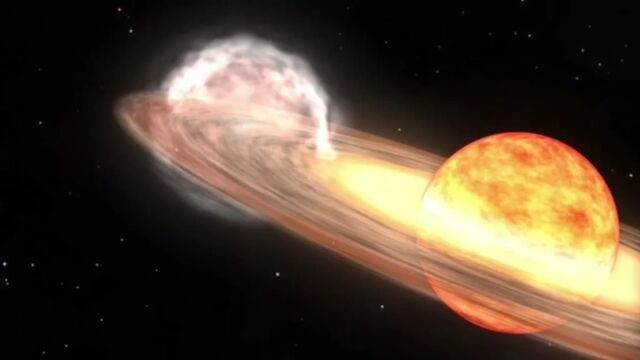 NASA/Goddard Space Flight Center
NASA/Goddard Space Flight Center
A rare Nova explosion, a once-in-a-lifetime event coming sometime in the next few months, visible to the naked eye.
In the Corona Borealis constellation, over 2,500 light-years away, lies a star named T Coronae Borealis. This star is preparing for an explosion that will temporarily make it one of the brightest objects in the night sky.
In this scenario, a red giant star and a white dwarf orbit each other. The red giant appears as a large sphere in shades of red, orange, and white, with the lightest part facing the white dwarf. The white dwarf is surrounded by a bright glow of white and yellow, indicating an accretion disk. A stream of red material flows from the red giant to the white dwarf. When the red giant moves behind the white dwarf, a nova explosion occurs, creating a pale orange ball of ejected material.
Once the material disperses, a small white spot shows that the white dwarf has survived the explosion.
A nova is different from a supernova, a massive explosion that destroys some dying stars. In a nova, the white dwarf remains intact and expels the collected material into space in a bright flash. This process repeats over tens or hundreds of thousands of years.
Dr. Rebekah Hounsell, an assistant research scientist specializing in nova events at NASA’s Goddard Space Flight Center in Greenbelt, Maryland, said:
“There are a few recurrent novae with very short cycles, but typically, we don’t often see a repeated outburst in a human lifetime, and rarely one so relatively close to our own system. It’s incredibly exciting to have this front-row seat.”
source NASA





Leave A Comment